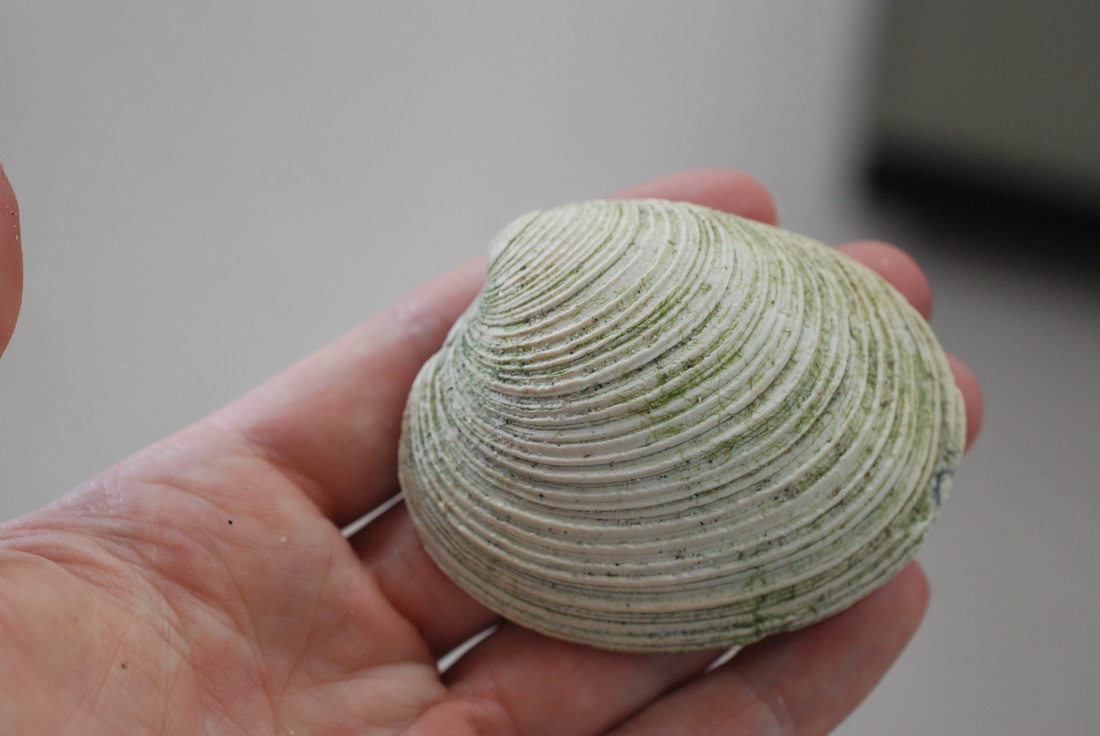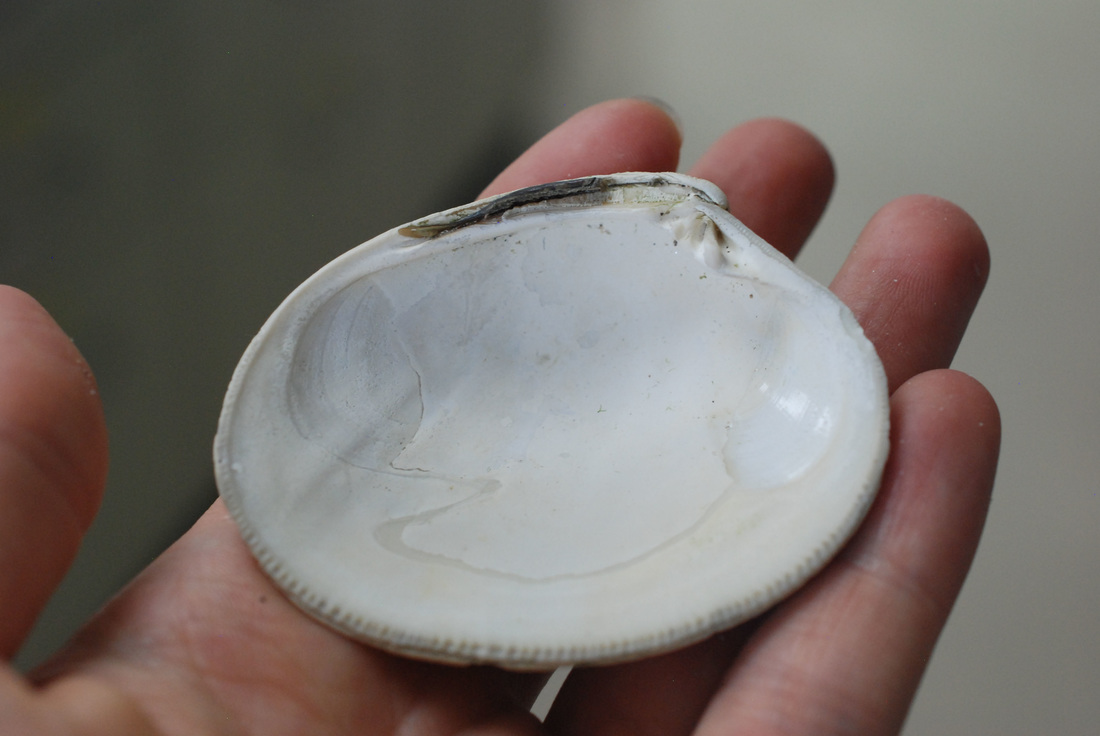Kennerley's venus, corrugated clam • Humilaria kennerleyi
Shell specimen from the bivalve collection at the Hakai Institute's Calvert Island field station. Photographed by Kelly Fretwell.
Identification
Kennerly's venus has a thick shell with raised concentric ridges that angle backwards towards the hinge, giving it a corrugated texture. The exterior is a chalky white colour, with a flakey brownish periostracum. Fine notches line the interior shell margins. The shell grows to 10 cm long.
Habitat & Range
While this clam is common, it is not particularly abundant. It can be found in sand and gravel substrates in the intertidal and subtidal to 45 m deep, from central Alaska to southern California.
Similar Species
The butter clam (Saxodomas gigantea), which can get much larger than Kennerly's venus, has concentric ridges that do not angle backwards towards the hinge. It also gapes at one end (posterior) while Kennerly's venus closes tightly.
iNaturalist
https://www.inaturalist.org/taxa/501042-Humilaria-kennerlyi
Kennerly's venus has a thick shell with raised concentric ridges that angle backwards towards the hinge, giving it a corrugated texture. The exterior is a chalky white colour, with a flakey brownish periostracum. Fine notches line the interior shell margins. The shell grows to 10 cm long.
Habitat & Range
While this clam is common, it is not particularly abundant. It can be found in sand and gravel substrates in the intertidal and subtidal to 45 m deep, from central Alaska to southern California.
Similar Species
The butter clam (Saxodomas gigantea), which can get much larger than Kennerly's venus, has concentric ridges that do not angle backwards towards the hinge. It also gapes at one end (posterior) while Kennerly's venus closes tightly.
iNaturalist
https://www.inaturalist.org/taxa/501042-Humilaria-kennerlyi
References
Cowles, D. (2007). Humilaria kennerlyi (Reeve, 1863). Invertebrates of the Salish Sea. Rosario Beach Marine Laboratory. Accessed 13/09/2017.
Harbo, R. M. (1997). Shells & Shellfish of the Pacific Northwest. Madeira Park, BC: Harbour Publishing. P. 167.
Lamb, A., and Hanby, B. (2005). Marine Life of the Pacific Northwest [electronic version]. Madeira Park, BC: Harbour Publishing.
Authors and editors of page
Kelly Fretwell (2017).
Cowles, D. (2007). Humilaria kennerlyi (Reeve, 1863). Invertebrates of the Salish Sea. Rosario Beach Marine Laboratory. Accessed 13/09/2017.
Harbo, R. M. (1997). Shells & Shellfish of the Pacific Northwest. Madeira Park, BC: Harbour Publishing. P. 167.
Lamb, A., and Hanby, B. (2005). Marine Life of the Pacific Northwest [electronic version]. Madeira Park, BC: Harbour Publishing.
Authors and editors of page
Kelly Fretwell (2017).






